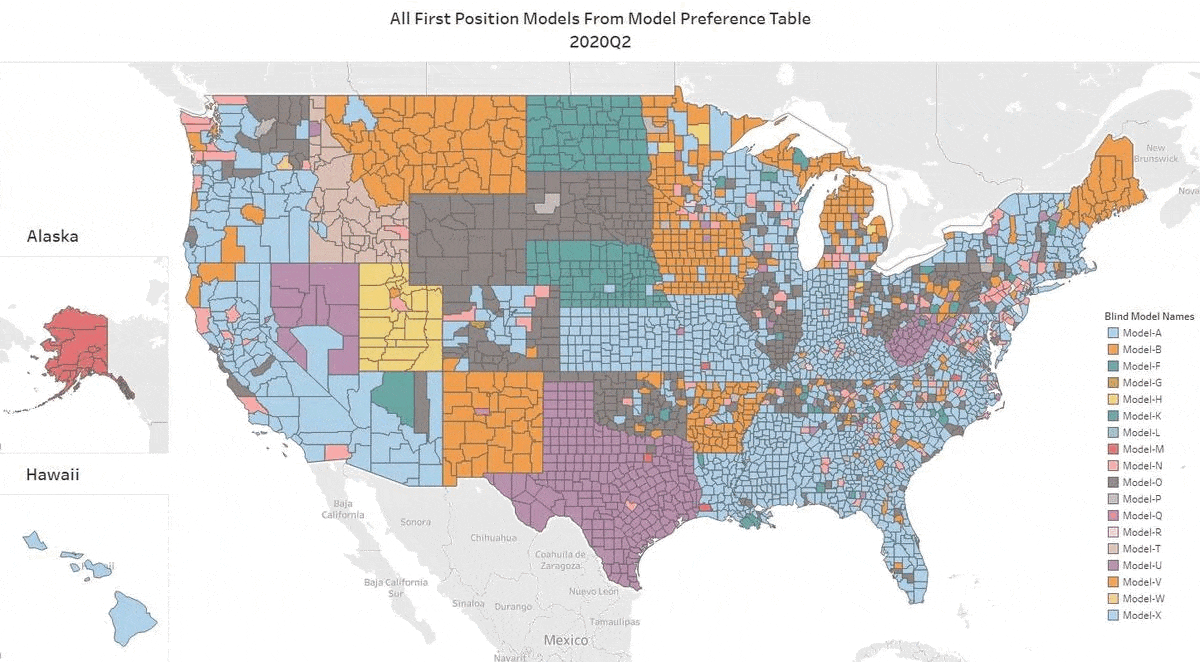Testing an AVM’s accuracy can actually be quite tricky. You might think that you simply compare an AVM valuation to a corresponding actual sales price – technically a fair sale on the open market – but that’s just the beginning. Here’s why it’s hard:
- You need to get those matching values and benchmark sales in large quantities – like hundreds of thousands – if you want to cover the whole nation and be able to test different price ranges and property types (AVMetrics compiled close to 4 million valid benchmarks in 2021).
- You need to scrub out foreclosure sales and other bad benchmarks.
- And perhaps most difficult, you need to test the AVMs’ valuations BEFORE the corresponding benchmark sale is made public. If you don’t, then the AVM builders, whose business is up-to-date data, will incorporate that price information into their models and essentially invalidate the test. (You can’t really have a test where the subject knows the answer ahead of time.)
Here’s a secret about that third part: some of the AVM builders are also the same companies that are the premier providers of real estate data, including MLS data. What if the models are using MLS data listing price feeds to “anchor” their models based on the listing price of a home? If they are the source of the data, how can you test them before they get the data? We now know how.
We have spent years developing and implementing a solution because we wanted to level the playing field for every AVM builder and model. We ask each AVM to value every home in America each month. They each provide +/-110 million AVM valuations each month. There are over 25 different commercially available AVMs that we test regularly. That adds up to a lot of data.
A few years ago, it wouldn’t have been feasible to accumulate data at that scale. But now that computing and storage costs make it feasible, the AVM builders themselves are enthusiastic about it. They like the idea of a fair and square competition. We now have valuations for every property BEFORE it’s sold, and in fact, before it’s listed.
As we have for well over a decade now, we gather actual sales to use as the benchmarks against which to measure the accuracy of the AVMs. We scrub these actual sales prices to ensure that they are for arm’s-length transactions between willing buyers and sellers — the best and most reliable indicator of market value. Then we use proprietary algorithms to match benchmark values to the most recent usable AVM estimated value. Using our massive database, we ensure that each model has the same opportunity to predict the sales price of each benchmark.
AVMetrics next performs a variety of statistical analyses on the results, breaking down each individual market, each price range, and each property type, and develops results which characterize each model’s success in terms of precision, usability, error and accuracy. AVMetrics analyzes trends at the global, market and individual model levels. We also identify where there are strengths and weaknesses and where performance improved or declined.
In the spirit of continuous improvement, AVMetrics provides each model builder an anonymized comprehensive comparative analysis showing where their models stack up against all of the models in the test; this invaluable information facilitates their ongoing efforts to improve their models.
Finally, in addition to quantitative testing, AVMetrics circulates a comprehensive vendor questionnaire semi-annually. Vendors that wish to participate in the testing process answer roughly 100 parameter, data, methodology, staffing and internal testing questions for each model being tested. These enable AVMetrics and our clients to understand model differences within both testing and production contexts. The questionnaire also enables us and our clients to satisfy certain regulatory requirements describing the evaluation and selection of models (see OCC 2010-42 and 2011-12).

